

Honestly, I've gone back and skimmed through my old copies of 3.5E and 4E Monster Manuals and realized just how much the 5th Edition Monster Manual actually manages to stuff into its pages as far as trying to give lore about these creatures to us. So much of 3E's prose is devoted to 'battle tactics', abilities and massive stat-blocks while the blurb about some of the creatures could honestly be barely a paragraph. (Although for the 'big races' like dragons or illithids, 3E goes super rambly) Meanwhile, 4th Edition spends so much of its page just listing like twelve different variations and classes of the same monster. As someone who's far more interested in the role-playing and world-building aspects of this game, I've definitely grown a significant amount of respect for how they handled the Monster Manual.
Click here for the previous part, covering Oozes to Sahuagin.
Click here for the next part, covering Treants to Zombies.
Click here for the index.
[Originally published on December 2019; Updated in November 2025]
____________________________________________________
____________________________________________________

Poltergeist


- 5.5E: Medium or Small Undead; Chaotic Neutral; CR 2
A formalized entry in the 2024 5.5E Monster Manual, the Poltergeist started out its career in 5th Edition as a little sub-bar under 'Spectre', as a potential variant. 5.5E took this horror movie trope and made it a full entry, and I am absolutely a huge fan of the artwork that the Poltergeist got. Poltergeists are ghosts that rattle and levitate objects to spook people, and so it is very much appropriate that we don't actually see the geist in question – just the random floating items at a fancy ball. Including that poor noblewoman's wig being pulled off her head! With the relatively large amount of random spectral ghost and ghost-adjacent undead in Dungeons & Dragons, I am happy that the Poltergeist remains unique in that it's portrayed as being invisible. It certainly can become visible, but then it's 'just' a Specter or a Ghost! In previous editions Poltergeists were just shown to be rather generic-looking ghost-people, which isn't particularly exciting.
In addition to the staple of properties that undead beings come with, Poltergeists are able to move through objects, become visible and invisible at will, and all of its attacks involve slamming objects telekinetically at people. They just feel fun, in my opinion, and would be the ghost of choice when you just want to have a little light-hearted adversary that isn't the soul-draining Shadow or the people-possessing Ghosts.


Poltergeists are noted to have various potential origins and motivations. Some of them don't even realize they're dead, and their Poltergeist-ing is a result of them going through the motions of their lives. Others are just straight-up evil ghosts that are specifically trying to sow discord. The Manual gives a bunch of other horror tropes for things that the Poltergeist might do to screw with the living. Becuase, yes, moving and rattling objects around is something that a boring Poltergeist can do! Making ghostly sounds... pfft! No, real Poltergeists who want to torment the people around them would do stuff like uncannily stacking books, perhaps to spell out something. Haunting a creepy puppet or doll! Footprints on vertical surfaces! Sticking knives in the ceiling or pictures! Specifically returning a discarded item to the person it's haunting! And the rather questionable 'removes bedding while someone sleeps', which... naughty naughty, Poltergeist!
____________________________________________________

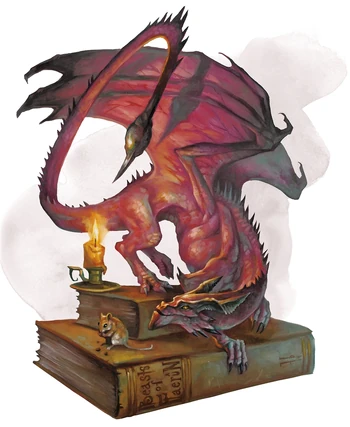
Pseudodragon
- 5.5E/5E: Tiny Dragon; Neutral Good; CR 1/4
Pseudodragons are an... interesting creature. They are tiny dragons the size of a cat, but are not quite dragons. It is smart enough to communicate with humans, but is essentially a little creature to serve as a little wizard's familiar – something that both its 5th Edition artworks portray quite well. There are many other animals that I'd associate as a wizard's familiar before a dragon, but I suppose it does make sense for the franchise as a whole to make the cute, adorable pets as being dragons. Pseudodragons can be tamed by adorable things such as treats, and 5.5E gives a whole table of specific 'taste' that a Pseudodragon wants as payment for being a companion. This goes from obvious gifts (specific food, clothes or toys), heartwarming (mementos from a lost master), or just adorable (bedtime stories, and time-consuming beauty treatments)
Pseudodragons have been lumped with the other 'not-quite-dragon' groups like dragonets in 2E and drakes in 4E, and I really do wish there's a consistent subgroup of this. Pseudodragons are particularly distinguished by their scorpion-tail, a feature that has remained remarkably consistent throughout the various iterations. A Pseudodragon's stinger tail contains venom that knocks out a person for hours. They are also capable of telepathy, sharing basic concepts like images of hunger, contentment or affection; while they make sounds resembling small animals like cats or birds. They truly are built to be both security guard and pet, aren't they?

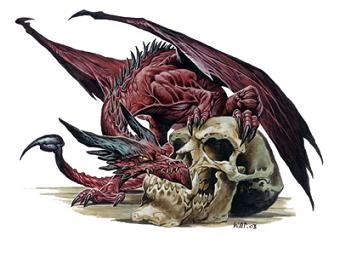

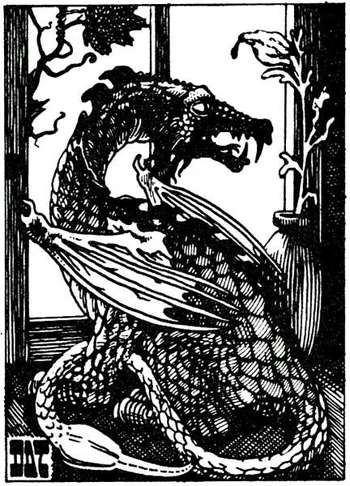
5.5E brings in some new descriptions about how the Pseudodragon lives outside of being a Wizard's familiar, and they live in scenic wilderness and look for slow prey – they really are just cats wearing a dragon skin, aren't they? They mimic the behaviour of their older cousins by gathering a mini-hoard of shiny rocks and colourful shells. While most Pseudodragons have been shown as red, Pseudodragons are noted (at least in 5.5E) to be able to have any kind of hue or marking. So at last, my dreams of a Purple Dragon in 5th Edition can be realized! Speaking of purple...
____________________________________________________


Purple Worm
- 5.5E/5E: Gargantuan Monstrosity; Unaligned; CR 15
The Purple Worm! I love that in D&D, the trope of the Sandworm popularized by Dune has been adapted into something a bit different. Fantasy really likes is gigantic subterranean worms, and despite their mundane name, D&D's Purple Worms fill that niche. Starting off with a humble, lamprey-like appearance in the first two editions, in 5E Purple Worms have a gigantic maw with multiple rows of teeth, and bony spikes running down its body. I also love the art pieces that showcase the sheer size of these things compared to a regular human as well... they are big enough to chomp down on humans like snacks.
Purple Worm are gigantic, durable monstrosities, and the most terrifying thing about them is their ability to simply swallow players whole, dealing damage over time with stomach acid. This is essentially all the Worm does. Taking a part of its anatomy that's mostly seen in the older art, the Purple Worm also has a stinger tail... but with most Purple Worm artwork showing it bursting out of the ground in the iconic Shai-Hulud pose, it's not until 5.5E that we even get a glimpse of the stinger tail.
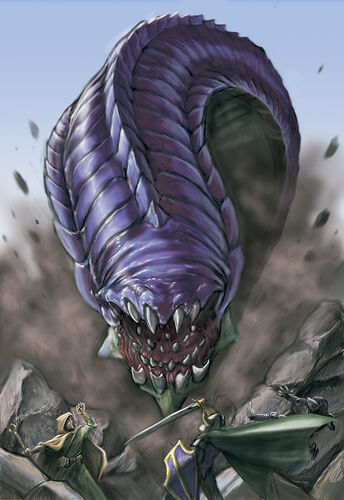
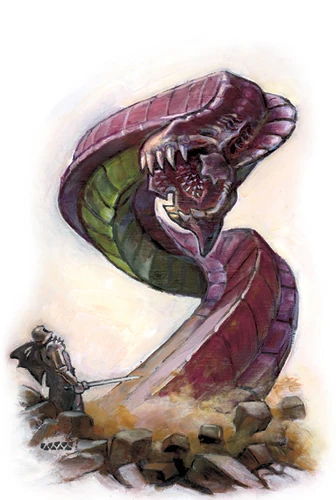

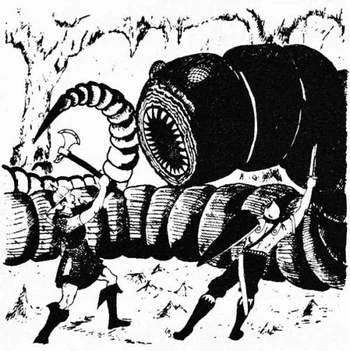
The Purple Worm's lore is relatively simple, as it's an oversized, gigantic creature that is driven by one thing, and one thing only: food. They have an impressive range of tremorsense, similar to their inspirations, and they will emerge to the surface heedless of what makes them. It could be a simple group of adventurers, or entire caravans or armies. The Purple Worms are especially dangerous in the Underdark, and their rock-boring was what made a lot of the massive tunnels in the complex subterranean network of the Underdark. Purple Worm tunnels allow for new avenues of transport in the Underdark, and is even safe because Purple Worms seldom backtrack. I love this little detail, tying a major location in the lore to the existence of an iconic monster! Underdark races, even including the big scary Illithids, often have to set up wards to deter the Purple Worms.
The Purple Worm is one of the casualties of the 2024 Monster Manual's layout problems, with its bio being truncated into two embarrassingly simple sentences.
___________________________________________________


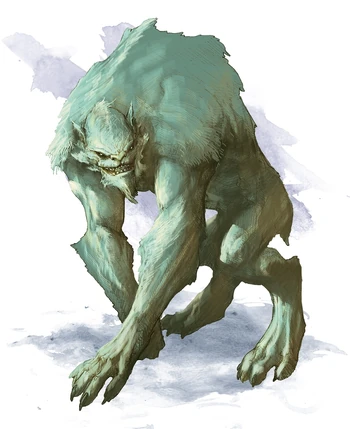
Quaggoth
- 5.5E/5E: Medium Humanoid (5E) / Monstrosity (5.5E); Chaotic Neutral; CR 2 (Quaggoth), 3 (Thonot)
Never been a big fan of the Quaggoth, if we're being honest. Starting off as looking like bears, 5E reinvented the Quaggoths to look like a spiky troll-man. They do look more 'serious' compared to the bear-like design, but I honestly don't really care for them all that much. Quaggoths are a violent, primitive species that were just extremely unlucky. The ancient elves clashed with them and drove them underground, and in the Underdark they mutated into their current form and are eventually recruited by the Drow, who took the Quaggoths as manipulated minions and continue to stoke their hatred of the surface elves.
Both Monster Manuals mention the existence of a specific type of Quaggoth called the Thonot, which has absorbed enough ambient psionic energy in the Underdark that it has gained psionic powers itself. Thonots find themselves in positions of authority, and when it dies, its body is devoured in a cannibalistic ritual by the other Quaggoths. 5.5E try to steer of the 'savage cannibal sometimes-enslaved race' by telling us about how the Quaggoths... really know how to hold a grudge. Yeah, that's not particularly interesting, is it?
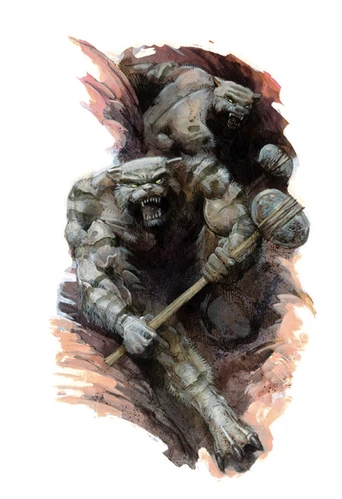

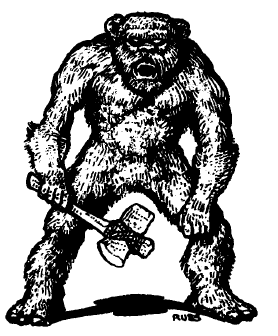
The lore of the Quaggoths is so dependent on the lore of other species that they are honestly quite bland. The idea of a 'race fallen into slavery' has been done several times in the Monster Manual alone, and so many done so more interestingly than the Quaggoth. The Kuo-toa, the Troglodyte, and even the Grimlock all do many of the tropes that the Quaggoth is trying to do but in far better ways, and I'm not even going to the other books yet. I honestly kind of wished that they kept the 'bear-man' look, because at least that would've given me something to remember them for.
___________________________________________________

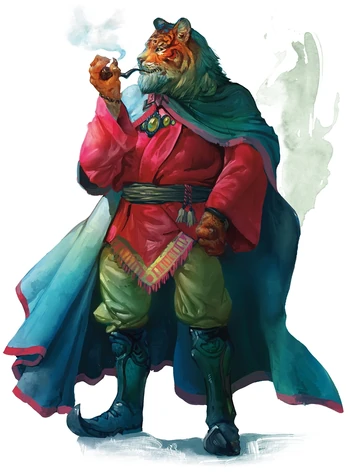
Rakshasa

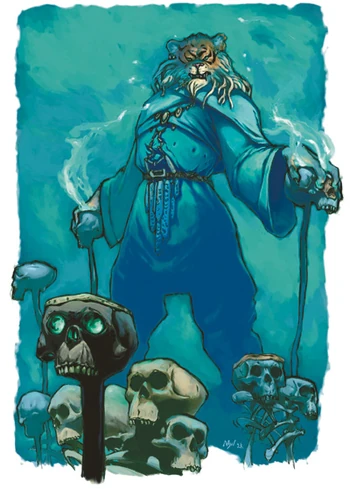

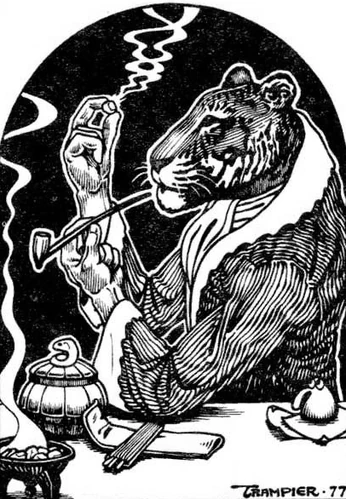
- 5.5E/5E: Medium Fiend; Lawful Evil; CR 13
The term "Rakshasa" borrows its name from a specific type of creature in Hindu-Buddhist mythology, generally referring to a race of shape-shifting fierce beings. Notably, they were not always evil – although most myths with them do feature malevolent individuals. Perhaps even moreso than the genies, the Rakshasa might be the one ‘classic’ monster in D&D that is a particularly poor representation of its mythological basis.
D&D’s Rakshasa, ever since the first edition, has always been depicted as tiger-men fiends with the rather delightfully quirky ‘upside-down palms’. As far as I could search, this seems to be a wholly original invention of D&D, but it is such a fun, flavourful aspect of the Rakshasa that it’s became iconic – a shapeshifter that can’t quite get everything right, and is marked by one sinister flaw. This quirk, by the way, is nicely highlighted in 5.5E. It is noted in most of the different editions that Rakshasas always try to hide their true forms, although the ‘tiger man’ design has became the iconic look of the Rakshasa.
Notably, some other editions have tried to split apart from it, with 4th Edition making Rakshasa be variable to include other kinds of large cats, while 5.5E gives us artwork of a tiger-headed Rakshasa leading a group of crocodile, goat and bird-headed Rakshasa. That’s a lot more fun, I feel, and fits more with making the Rakshasa feel special. With the cat-people known as the Tabaxi being so well-known in D&D, the idea of a cat-person isn’t particularly that special anymore.




The lore about Rakshasa has been inconsistent throughout the years. Most editions agree that the Rakshasa are fiends, but no one can agree what they are since they don’t quite fit in the hierarchical nature of the Devils, definitely not among the chaotic berserker Demons, and too weird to be part of the Yugoloths. I’ve always prescribed to the fact that the Lower Realms have many other kinds of ‘evil’ beyond juts the main three, and the Rakshasa are one of the few weirdos that are prominent enough in spite of their independence. Rakshasa in 5E are noted to originate from Devils, although this never really gets brought up too much. 5E Rakshasa used a dark ritual to free their essence/souls from their fiendish bodies, manifesting as Rakshasa in the Material Plane. They enact evil schemes and feed on human flesh, trying to keep their presence a secret. Notably, while a Rakshasa is still reborn in the Lower Planes upon death, it is highlighted to be particularly agonizing and torturous, leading it to seek vengeance towards its original killer… or its descendants.
The Rakshasa in combat are spellcasters, able to unleash baleful commands and cast spells such as fly, invisibility and plane shift. Most interesting to me is the Rakshasa’s remarkable resistance to magic, automatically succeeding on most magical effects that demand a saving throw. They also are able to prevent any kind of scrying or scanning magic on them. Honestly, though, the Rakshasa’s role in a campaign feels more to be a recurring villain. Discovering that an NPC is actually a Rakshasa in disguise, hiding to kidnap people to eat, is far more interesting than the eventual fight with it. It really isn't my favourite creature in the Monster Manual, if we're being honest, but there's enough about it to make it memorable.
____________________________________________________

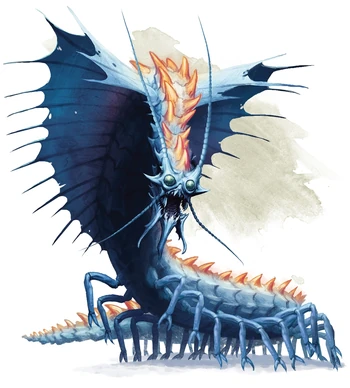
Remorhaz
- 5.5E/5E: Huge Monstrosity; Unaligned; CR 11 (Regular)
- 5.5E/5E: Large Monstrosity; Unaligned; CR 5 (Young)
This, on the other hand, is absolutely one of my all-time favourites. How cool is the Remorhaz? I absolutely like it much more than the Purple Worm, even though the two of them fulfill a similar niche as subterranean giant worm-y predators that erupt out of the ground. The Remorhaz is just visually so much cooler, being a giant centipede coloured in pale blue with red highlights, and a monstrous, fanged mouth with strangely segmented jaws that give it an appearance far more fearsome than a regular giant bug. It’s also got long, trailing antennae, and a cobra-hood-lie set of fins down its front half. The Remorhaz has looked particularly cool and iconic ever since its 3E redesign. I wasn’t the biggest fan of a lot of 3E’s more ‘serious’ redesigns, but the Remorhaz is one that takes everything cool about the 1E and 2E art and makes it even cooler.

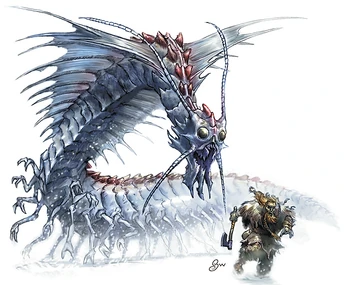
Reading more about the Remorhaz’s biology makes it even weirder. I don’t think it’s particularly strange for the Remorhaz to be living in polar regions, and its colour kind of marks it as an icy beast anyway. But the strangest – and coolest – thing about the Remorhaz is that it’s actually got a constantly heated body that pulses with internal fire. I love this. This subverts a lot of the ‘Pokemon logic’ of a creature living in icy areas having ice powers and being resistant to ice. The Remorhaz actually has a heated, furnace-like inner temperature, which is what allows it to live in the frosty tundras. This gives it immunity to both cold and flame, which I thought was quite clever. It just really makes sense, isn’t it? I don’t think I can express it in short words, but this really helps in making me think of how a specific species has adapted to live in the extremely locations of a fantasy world.
Remorhaz are ambush hunters with the same ‘tremorsense’ that we’ve described in many other creatures, and they are able to lower their body temperature to camouflage itself while in disguise. I can imagine that it starts heating up to help melt the snow as it rises up to pounce on elk, polar bears, and luckless adventurers.

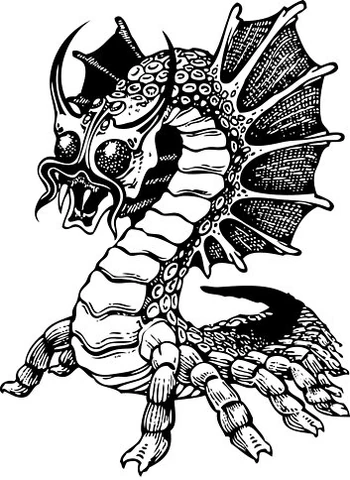
Despite their impressive look, these giant kaiju centipedes are actually domesticated by Frost Giants, although they have to train Remorhazes from young. Easily one of my favourite visual designs from the game, even if combat-wise the Remorhaz ultimately just a one-note ‘big monster that swallows adventurers’ creature.
____________________________________________________

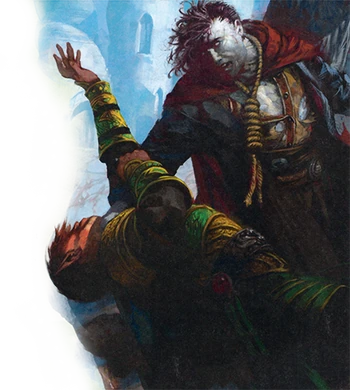
Revenant
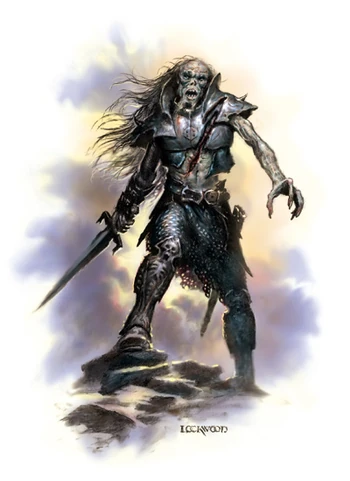

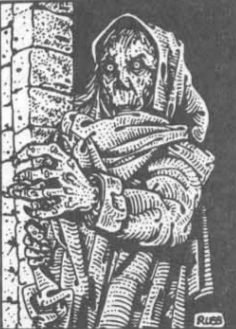

- 5.5E/5E: Medium Undead; Neutral; CR 5 (Revenant)
- 5.5E: Huge Undead; Neutral; CR 7 (Graveyard Revenant)
- 5.5E: Gargantuan Undead; Neutral; CR 10 (Haunting Revenant)
The Revenant is a rather… simple monster originally. The word itself is really ambiguous, being as generic as possible to refer to something that has returned from the dead and being quite as generic as a term like ‘undead’. D&D's Revenants are particularly formed from the souls of mortals who are consumed with revenge, which flavours some of its other abilities – it supernaturally knows the direction of the being that it swears vengeance towards, and has an ability that allows it to freeze its rival in place.
In D&D, Revenants embody the trope of the ‘unstoppable’ physical undead. Revenants are able to regenerate from damage, and it can even return to life by possessing another physical corpse after it has been destroyed. This makes it really hard to get rid of, even if the Revenant itself might physically not prove too much of a challenge. 5E notes that the Revenant's identity is always known to the person it swears vengeance against, and 5.5E even notes that given enough time, the features of the corpse that the Revenant's soul possesses will mutate to resemble the original form.
And despite all this, the Revenant isn’t particularly impressive, sitting at a mere CR 5, not that much more powerful than other physical undead like Wights and Ghasts. I do find the Revenant quite fun, playing upon the trope of an undead with unfinished business, and a very specific story to play around with.



Interestingly, 5E gives the Revenant an interesting limitation. A Revenant has only one year to enact vengeance, and crumbles to dust regardless of whether it manages to accomplish said vengeance. It also is destroyed if it actually manages to catch the target of its vengeance. This really ends up making the Revenant feel like a more ‘benevolent’ undead of sort, with the 5E Monster Manual explicitly using terms like ‘divine justice’, and even noting that Revenants will even seek out allies to help it mete out its revenge.
5.5E gives us two brand-new stronger versions of the Revenant, rather unexpectedly! Seen in the background of the artwork of the regular Revenant is the Graveyard Revenant, a grotesque mass of entire swarms of bodies acting as one. This is certainly a trope in many horror fiction, particularly those revolving around zombies, but it is an interesting concept. Is the Graveyard Revenant a single soul whose grudge is strong enough to animate an entire graveyard's worth of corpses? Or is it a throng of people who were killed and their restless souls are united in vengeance towards a single person? Perhaps it could be either/or!

Haunting Revenants are particularly cool, too. The artwork shows a house that is transforming into a monstrous form, with the door splintering into teeth and the windows acting as eyes, and the inside of the Haunting Revenant glowing with unnatural power. Haunting Revenants are spirits that instead of possessing their own corpse, possess the entire place where they were killed, lurking in plain sight and waiting for their adversary to enter. I don't think it's a particularly effective way to get at someone that kills you, but what a cool creature concept, isn't it? A whole revenge-seeking haunted house? It doesn't have to be a house, meaning that the Haunting Revenant is an avenue for one to create like a Haunted Ship or something, which makes more sense with the lore of revenants wanting to seek out those who had wrong them.
The Haunting Revenant is able to throw objects within itself, and has the ability to potentially cause spells cast within itself to fail. They are also able to 'restore' itself upon death, possessing another structure of similar size nearby. More impressively, they are able to 'invite' and teleport anyone nearby into itself. I just feel like with the limited lore we get about the Haunting Revenant that it does raise a lot of questions. Is it also limited by the one-year timer that ticks for the other Revenants? Why is it teleporting random people inside its body when it's presumably also hunting for someone that killed it in life? Or is it perhaps something that has a more generalized grudge, like against everyone in a nation or something? It's monsters like this that makes me sad that we don't get more extensive writeups for monsters!
I honestly like this design a lot, but I also felt like it really could have been its own thing, whether a monstrous house-possessing spirit or even a house-sized Mimic. I felt like tying it to the revenge/vengeance-themed gimmick of the Revenant does both monsters a bit of a disservice.
____________________________________________________

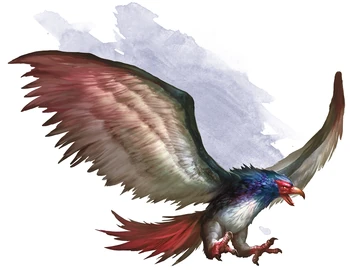
Roc
- 5.5E/5E: Gargantuan Monstrosity; Unaligned; CR 11
Hailing from Arabian mythologies, Rocs are big bird. They are, in fact, gargantuan, with the 2E and 3E artworks showcasing the size of a Roc relative to an elephant or a boat respectively. And I've always felt that they are a bit mundane. I respect the origin of the mythology, and it's not like I don't like Rodan of Godzilla fame, but in a world where dragons and chimeras exist, a giant bird is a bit less special. The sheer size can be a big, epic moment as you realize that Rocs can carry elephants and whales in their talons... but again, I reiterate that the Roc is simply a big bird.
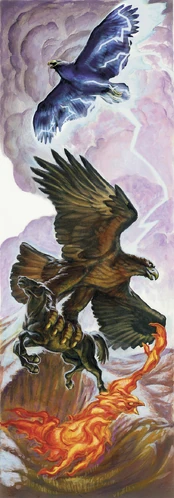


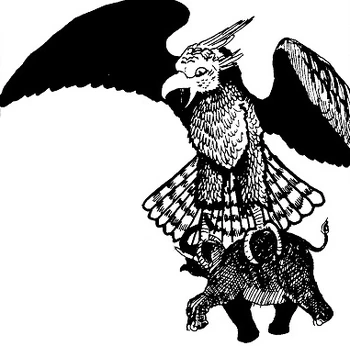
5th Edition's lore on Rocs has them be part of the Giants vs Dragons war, tying in to 5E's massive love towards the lore of Giants and their god Annam. I'm not sure that the giant Rocs are particularly useful against fire and thunder breathing dragons, though. Rocs were freed from this duty after the war, although some are still kept by Cloud Giants and Storm Giants as pets. I would like to bring up that 4E's reinvention is something I found interesting, lumping the Roc as the 'Normal-type' (to bring Pokemon terminology) of a species of giant birds that also include the Thunderbird and Phoenix.
I do like the detail that Rocs tend to avoid humanoid towns because they specifically want to hunt prey of a certain size, which honestly does make sense. They also apparently lair in nests made up of trees, but also sometimes the remnants of ships or tents that they mistake as prey. The 5.5E Manual capitalizes on this, giving us a table to roll on an interesting encounter on a Roc's nest (including a live elephant) but when the junk in the nest is the most interesting thing about the Roc, I feel like they really could have done something more about it.
____________________________________________________

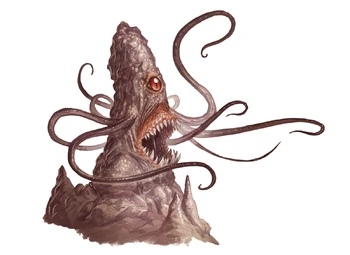
Roper
- 5.5E/5E: Large Monstrosity (5E) / Aberration (5.5E); Unaligned; CR 5
Ropers are a weirdo that I really like. Again, the Ropers fall into the ‘inanimate object turns out to be a deadly monster, surprise!’ series of monsters that include creatures like the Mimic or Cloaker… but out of them, I feel like Ropers kind of make sense? Real-world animals already mimic actual stone, after all! Ropers in disguise resemble stalagmites, the chunks of rocks that rise from the ground upwards. But when they attack, they sprout a massive eyeball, a gigantic maw, and a host of sticky immobilizing tentacles. They don’t exactly look like any real creature, and I don’t think they’re meant to look like any real creature. 5E classifies them as ‘Monstrosity’ while 5.5E has them as ‘Aberration’. I don’t think they’re that ‘incomprehensible’ to be classified as Aberrations, a creature type that I think 5.5E slings around way too much.
But anyway, Ropers! Ropers are voracious predators that will eat anything that comes near it, ambushing anything in the Underdark from beasts to adventurers in full plate. It adds to the ‘everything trying to kill you’ vibe of the Underdark, and I really do like that the description that it actually is mobile, having rows and rows of ‘sticky cilia’ on its base. So it’s equivalent to something like a giant anemone. This theoretically allows Ropers to also hang from the ceiling like stalactites, but most artwork only show Ropers sprouting from the ground.
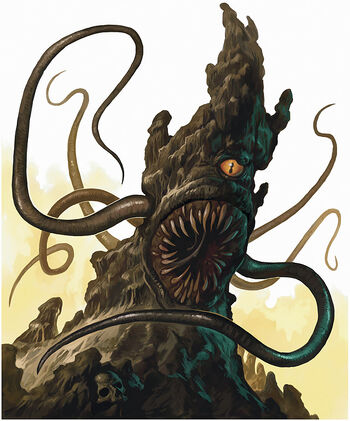
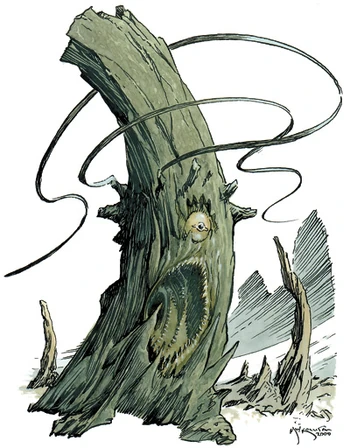


I also love the little description of Ropers explicitly making horrible sounds as it reels in its prey. I also like that Ropers can digest everything except the most valuable materials (platinum, gems and magic items), which is another aspect of how much D&D monsters are designed around the dungeon-crawling and looting gameplay loop.
5.5E adds a bit of an interesting, different hunting methods to Ropers, explaining that a Roper’s tendrils can extend really far from its body, out of visual reach of the Roper itself. This makes the Roper more like a creature foraging for food, and allows the Roper to drag its prey through hazardous locations like gas-filled caverns, a nest of snakes, pools of magma, or just plain old spiky stone. I also am a huge fan of the descriptions of a Roper’s tendrils as being lined with lots of spines that inject the paralytic effect, which is something similar to stinger cells in a jellyfish or anemone.
On its own, the Roper is neat enough but I find it much cooler because of the next monster, which gets its own entry but I’m reviewing alongside the Roper for reasons that should become apparent:
____________________________________________________

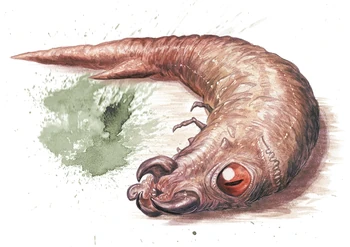
Piercer

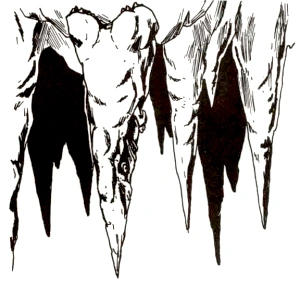

- 5.5E/5E: Medium Monstrosity (5E) / Aberration (5.5E); Unaligned; CR 1/2
The Piercer was introduced as just another 'haha, get punked' monsters back in its original appearances. The idea is simple: It's a sentient stalactite that drops down on adventurers when they walk under it! Oh no!
Well, 5E makes the Piercer something far more interesting, establishing it as the larval form of the Roper. Suddenly, two weird stalactite/stalagmite monsters are actually connected by a strange life cycle that makes the two creatures feel like two half-baked ideas into a fleshed-out species! I love the contrast between the 5E and 5.5E artworks, with the 5.5E artwork really highlighting the resemblance between the Roper and Piercer, while the 5E art showing a post-ambush Piercer showing the somewhat more grub-like anatomy.
Note that the Piercer, even in 5E, still has the Roper face. There’s a scowling, grumpy mouth next to the eye! That fanged, bug-like ‘mouth’ is actually is suction pads that it uses to cling to the cavern ceilings! Not sure if we needed those random insectoid feet, but I suppose they are the precursors to the Roper’s tentacles.



Again, the Piercer is the larval form of the Roper allowing the Piercer to essentially accompany the Roper in a combat as its allies. Piercers drop down, sometimes in large groups, to kill their prey and feed on it. Piercers that miss their mark have to slowly crawl up, all slug or caterpillar-like, on those weak legs – which in turn makes it extremely vulnerable to enemies. Without the force of gravity helping it pierce its prey, all the Piercer has to rely on is its weak bite attacks. The visual imagery and the fantasy biology in play here is genuinely fun, and you get this image of the weak, hapless larva Piercers being ineffective swarm hunters until the ones that survive slowly grow larger, harder, and more powerful as mature Ropers.
I would like to appreciate the older artwork of the Piercer, like that 1E artwork that shows it perfectly camouflaged against other stalactites until you realize that the Piercer is clamping onto the top with nubby little clawed feet. And the 2E artwork shows it having a snail-like foot to push it around. I also would like to note that the idea of a ‘hostile stalactite’ wasn’t abandoned prior to the Piercer’s reintroduction in 5E; it was actually replaced by the Darkmantle, which also ‘seriously updates’ the Cloaker. With the Darkmantle being deemed cool for its own merits, and the Cloaker being reintroduced as a demon manta ray, I like that the Piercer managed to worm its way back into a core Monster Manual.
____________________________________________________

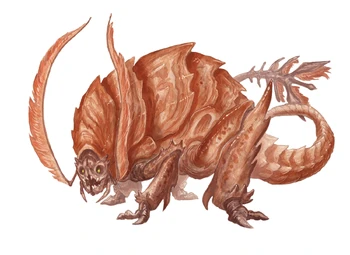
Rust Monster
- 5.5E/5E: Medium Monstrosity; Unaligned; CR 1/2
The Rust Monster has an interesting reputation among the D&D fandom, and it’s a bit of a relic of a different time, when D&D dungeons and adventures were meant to be far more ‘meat-grindy’ back in the day. The Rust Monster is the most iconic of monsters that are there to take away things that your players have gotten, with the Rust Monsters destroying non-magical equipment. Yes, your fighter’s sword, your barbarian’s axes, your bard’s triangle… all of them will turn to nothing but rust at the mere touch of these giant bugs! Yes, even the expensive mithril armour! And probably gold coins as well!
Monsters like the Rust Monster, the Disenchanter, and the idea of ‘stat/level destruction’ would be particularly phased out in 5th Edition, as not everyone finds it fun to have their only way of fighting robbed by an unlucky dice roll in an unlucky encounter. It’s debatable how ‘proper’ this is in a dice-based game like D&D, but I agree that it’s something that in the hands of a more toxic gaming group could feel really, really bad. Rust Monsters, being the most iconic of them, managed to stay, though!
With all of that, what is a Rust Monster? They’re giant dog-sized beetles, with an interesting anatomy. The specifics really vary, but all incarnations share a tail that ends in a fan-like set of spikes; four chunky legs (that doesn’t always look buggy); an insectoid face; and two long feeler tentacles that allow the Rust Monster to destroy metal. They were just regular antennae before, but 5E changes them to the feathery antennae of moths – which I find infinitely cooler. 5.5E implies that they normally go around hunting for metal deposits, evolving specifically to disintegrate them into an ingestible form… with the side-effect of this magical evolution turning them into an equipment-based adventurer’s worst bane.
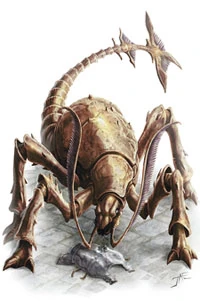


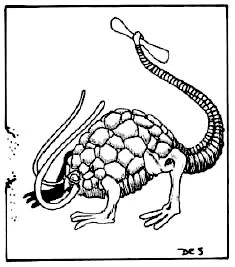
Older editions interestingly seemed to give the Rust Monster a more ‘rocky’ vibe, with the editions alternating on how much of ‘just a big bug’ they want to make the Rust Monster. 5E goes full-on insect, while 5.5E splits the difference and gives its new take on the Rust Monster a carapace that resembles golden armour plating. Much as I love giant bugs, such a weird monster like the Rust Monster does deserve to be a bit stranger than ‘merely’ being a giant beetle.
I like the description of how Rust Monsters are normally docile and non-hostile… until they sense metal. And adventuring parties always have some sort of metal on their persons! Rust Monsters are possessed with an ‘metal sense’, allowing them to detect and charge ravenously towards it like how sharks can sense blood in the water. Consequently, this also means that adventurers can distract Rust Monsters by launching metal objects behind them. The 5E Manual describes them as hunting either alone or in small groups, and are sometimes tamed by Underdark species that don’t use metal… and I can see these guys settling in colonies of Troglodytes, Grimlocks or Myconids, who don’t tend to use a lot of metal… and being used as guard dogs against the surface-dwellers who come with metal.
A huge fan of these guys. They don't always lead to a good time for your players and adventurers, but I really do appreciate how the D&D designers manage to turn a mechanic like weapon destruction to inform the genesis and biology of this species that revolves around it.
No comments:
Post a Comment